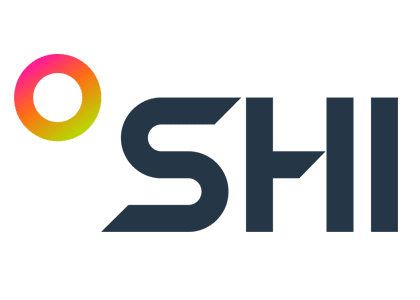Is your cloud environment truly optimized, and do you still need FinOps?:
Discover the surprising truth and what to do next

Today, an organization like yours concluded all optimization efforts in their cloud environment were complete, with no further cost savings to discover. They assumed their FinOps efforts were over.
However, if this is their mindset, they are mistaken.
What about continuous cloud cost tracking? Or keeping up with vendor licensing updates? And don’t forget about in-house personnel changes.
You don’t want to fall into complacency traps. FinOps is about more than saving money — it’s an ongoing journey that requires regular reviewing and monitoring. Even with a cloud setup that is monitored and evaluated for inefficiencies and waste, FinOps will continue to play a vital role in how you manage and maximize your cloud resources.
What is FinOps?
While cost optimization is an important part of FinOps, it’s not the entire purpose.
FinOps is the practice of managing cloud and organizational costs by bringing together finance, engineering, and operations teams. The goal is to ensure cloud spending is efficient, aligns with your needs, and helps your organization make better decisions about how to use cloud resources for business value.
FinOps also helps you with cloud governance, predictability in costs, and even supporting innovation. By using FinOps, you create a culture where teams can work together to make informed decisions about using the cloud. Think of FinOps as another tool necessary to drive cross-team communication, transparency, accountability, and continuous monitoring.
Why FinOps is necessary after optimization
Optimizing your cloud setup today does not mean it will stay that way forever. Cloud usage and costs can shift as your business grows or changes direction.
You might start using new services, increase storage, or scale up during busier times. FinOps helps provide visibility into your cloud spend, even as these changes happen. Engaging in FinOps early also allows you to start forecasting for upcoming changes.
FinOps is not only about cutting costs
While that piece is essential, you also want to make sure you get the best value for your spend. It helps your organization make informed decisions and provides insight into balancing the need for performance with cost. This collaborative effort across the organization promotes transparency and accountability when it comes to cloud resources, ensuring potential new implementations will support your growth and value.
FinOps provides the ability to track cloud costs in real time
This means you can spot potential issues early and adjust before costs get out of hand. Even if your infrastructure is optimized, unexpected changes — like a new project, a temporary test environment, or an anomalous event — could drive up costs. Utilizing FinOps, you are ready to react quickly and keep your spending under control.
FinOps helps you share cloud cost responsibility across all teams
When engineers, finance, and operations all have visibility into costs, they can work together to stay efficient. Without FinOps, this collaboration can easily fade, and cloud spending can slip through the cracks. Once a bill is produced, it is too late; then, there is an effort to scramble and find out where the costs were incurred, from which resource, and what team or department is responsible.
FinOps ensures you keep up with partner and product changes
Cloud providers like AWS, Azure, and Google Cloud are constantly rolling out new features and pricing models. Without FinOps, you will miss opportunities to further optimize your cloud spending, improve efficiency, and collaborate across the organization and with strategic partners.
3 common pitfalls to avoid
SHI’s experts have supported organizations of all sizes at every stage of the cloud journey. We have seen our fair share of unfortunate pitfalls organizations face when believing cloud environments are fully optimized. Here are the three topping the list.
1. Automation failure
Organizations often set up automation for tasks like cleanup and assume it will continue to function correctly without further oversight. In one use case, a customer had automated cleanup for their EBS snapshots, but the automation failed, leading to $30,000 in unnecessary costs.
You can divert this issue by regularly monitoring and verifying your automation processes are functioning as intended, as cloud environments are dynamic and constantly changing.
2. Bandwidth and resource provisioning
When provisioning resources, the focus is often on application functionality rather than cost efficiency and optimal resource configuration. Organizations may not consider whether you are using the right database type or if all components are configured for both efficiency and cost-effectiveness.
The solution lies in evaluating and optimizing resource provisioning to ensure it meets both performance and cost-efficiency goals.
3. Lack of continuous monitoring and revisiting
Organizations may set up initial configurations and processes but fail to revisit and update them regularly. Similar to outdated disaster recovery plans, cloud configurations may become inefficient if not regularly reviewed and updated.
Be sure to implement a continuous monitoring and review process so configurations remain relevant and efficient, while considering changes in technology and organizational needs.
By addressing these pitfalls, you can ensure your cloud environment remains optimized and cost-effective over time.
Implement FinOps in your cloud environment
While optimization is a great first step and the most evident, FinOps is what keeps you on track for lasting cloud success. It’s more than just a one-time fix.
Here are three additional benefits of committing to FinOps services that can help you maximize your cloud investment:
- Make smarter cost-reduction decisions with ongoing monitoring and optimization.
- Allocate resources more effectively with better visibility of your full environment.
- Take control of cloud spending and usage with customized support.
Bringing clarity to your cloud, SHI’s comprehensive FinOps offering can be tailored to your organization’s unique needs. Our FinOps solution architects can explore your pain points and goals to identify the best options for your environment.
Reach out to your SHI account executive to learn more or connect with one of our cloud experts today.




